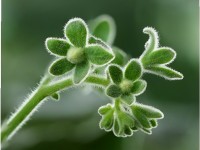Lecithin may improve the myelination in Charcot-Marie-Tooth disease

Charcot-Marie-Tooth disease is the most common hereditary neuropathy and affects more than two million people worldwide. Researchers now hope to use lecithin, a harmless dietary supplement to treat the incurable illness. In Germany alone, at least 30,000 people suffer from Charcot-Marie-Tooth neuropathy, which belongs to the class of rare diseases. Due to a genetic defect that causes a duplication of …
























